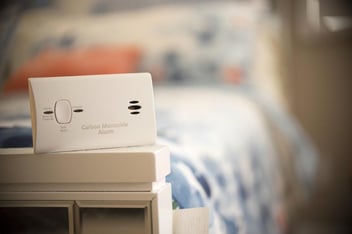Carbon monoxide 101
Carbon monoxide (CO) is a danger to everyone, but did you know certain groups are more susceptible than others? We’ve listed the highest risk groups along with some information about why carbon monoxide exposure may be more dangerous.
Carbon monoxide and babies and young children
Did you know that children breathe much faster than adults? This means in the case of a carbon monoxide poisoning they are breathing in significantly more CO. Children younger than four years old are the highest risk group. When a child is exposed to CO it can replace oxygen in their blood and build up in their body. Severe carbon monoxide poisoning can lead to long term organ and tissue damage.
Carbon monoxide and the elderly
Older individuals are a high risk group because they are more likely to already be suffering from health problems, including respiratory or heart issues. Additionally their bodies are not able to deal with oxygen-deprivation as well as a young adult. This means the presence of carbon monoxide in their bodies is magnified, leading to dangerous outcomes.

People with heart or respiratory problems
Individuals with heart problems commonly have insufficient blood supply to various parts of their bodies. The presence of carbon monoxide will decrease this even more. Additionally people with breathing problems are more vulnerable to CO. Trouble breathing often means people are not able to pump enough blood throughout their bodies to supply optimal levels of oxygen. Too much CO makes this issue even worse.
Pregnant women
Pregnant women breathe at a higher rate than non-pregnant women. This means they will take in more CO than others regardless of how much is present in the air. Additionally when a woman is pregnant her ability to carry oxygen through the bloodstream is already decreased, heightening the effects of CO.
Having a Canadian-certified CO detector in your home and scheduling annual inspections of fuel-burning appliances can help keep your loved ones safe. For warning signs, symptoms and fact about CO visit our carbon monoxide safety page.




